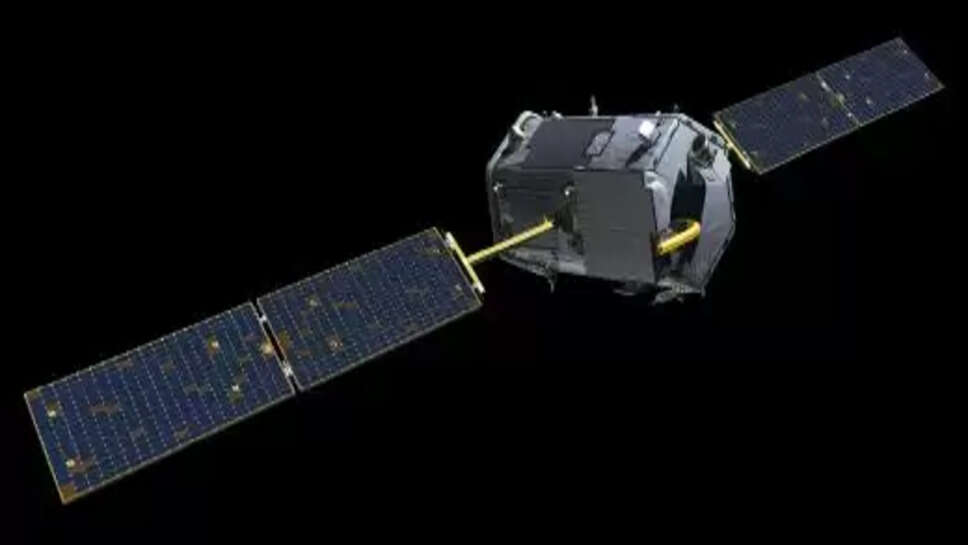NASA Carbon Monitoring Cut Sparks Global Climate Research Setback

In a move that has stirred controversy across the scientific and environmental communities, the Trump administration has initiated the shutdown of several NASA missions dedicated to monitoring carbon emissions and climate-related data. These programs, considered critical by many researchers for understanding Earth’s changing atmosphere and informing policy, have been quietly targeted for defunding and decommissioning, raising questions about the administration’s stance on climate science.
The decision, part of a broader strategy to roll back environmental monitoring and regulations, signals a significant shift in the United States' commitment to global climate transparency and scientific leadership.
The Mission and Its Significance
NASA’s carbon monitoring programs have long provided the most comprehensive, high-resolution data on carbon dioxide emissions and absorption on Earth. Among the missions affected is the Carbon Monitoring System (CMS), which used satellite and airborne instruments to track CO₂ levels with precision. The data was not only crucial for scientific research but also for helping nations meet international climate agreements like the Paris Accord.
By using sophisticated satellite technology, these programs offered insights into how forests, oceans, and other ecosystems absorb and emit greenhouse gases — a necessary understanding in mitigating climate change.
“CMS was the backbone of our climate accountability system,” one scientist remarked. “Without it, we’re essentially flying blind.”
Quiet Cuts, Loud Consequences
The cuts came not as a sweeping announcement, but rather through a slow and deliberate defunding of projects, non-renewal of contracts, and lack of future mission planning. The Trump administration reportedly targeted these programs citing ‘budget constraints’ and the belief that climate monitoring efforts should not be part of NASA’s core mission.
However, critics say the reasoning is more ideological than financial. Many believe this is part of a broader campaign to suppress data that could support the scientific consensus on human-driven climate change — a topic that the Trump administration has repeatedly questioned or downplayed.
“This isn’t about saving money,” said a former NASA official. “It’s about shutting down knowledge.”
Impact on Science and Global Cooperation
The discontinuation of these programs doesn’t only affect the United States — it reverberates globally. Nations working toward emission reductions rely on NASA’s data to verify their own environmental commitments. Without this neutral, high-accuracy information, the world loses a trusted referee in the climate game.
For example, developing countries that do not have the resources to operate their own satellite systems often depend on NASA’s openly available data to track deforestation, industrial emissions, and carbon sink effectiveness.
The shutdown may also cause serious disruptions in scientific continuity. Long-term datasets are essential in climate research, allowing scientists to track trends, detect anomalies, and make projections. Removing key parts of the monitoring system creates data gaps that could take years or decades to repair.
Political Backlash and Scientific Outrage
The move has faced backlash not only from environmentalists and climate scientists, but also from international partners, space agencies, and universities. Many experts view the action as part of a broader war on science — one that undermines facts in favor of political convenience.
“This decision defies scientific integrity,” said one senior climatologist. “Cutting off your own ability to see a crisis doesn’t make the crisis go away.”
Several organizations have issued statements urging Congress to restore funding and mission continuity. Some lawmakers have also pushed back, arguing that national security and economic interests are tied to climate data — from understanding agricultural productivity to anticipating natural disasters.
“Shutting down carbon monitoring isn’t just bad science,” a senator commented. “It’s bad policy.”
What’s at Risk
Among the specific missions and tools affected:
-
Carbon Monitoring System (CMS): The program aimed at tracking carbon emissions and uptake globally.
-
OCO-3 (Orbiting Carbon Observatory-3): Installed on the International Space Station, it provided a detailed view of Earth's carbon cycle.
-
Other Earth-observing satellite projects, which integrate climate-relevant variables such as methane, aerosol pollution, and ocean heat content.
The budget for the CMS program was around $10 million annually, a relatively small cost compared to NASA’s full budget — but with outsized impact. Its cancellation not only halts ongoing research but also discourages the next generation of climate scientists.
The Global Vacuum Left Behind
With NASA stepping back, who will fill the void? Some believe that Europe, Japan, and private satellite companies may increase their roles in climate tracking. The European Space Agency’s Copernicus program, for instance, already provides significant environmental data.
But concerns remain about data accessibility, consistency, and political neutrality. NASA’s long-standing reputation for open-source, science-first data makes its absence uniquely troubling.
“Other countries may step up, but there’s no replacing the credibility NASA brought to the table.”
A Future Without Visibility?
The Trump administration’s decision reflects a broader pattern of removing or ignoring data that challenges political narratives. Whether it’s sidelining EPA scientists, dismissing pandemic reports, or eliminating climate metrics from government websites, the trend is clear: if the information is inconvenient, it’s eliminated.
This strategy might buy short-term political gain, but at the cost of long-term planetary risk. Without reliable data, policymakers, businesses, and citizens are left without a compass in an era of climate turbulence.
Climate change continues regardless of whether we choose to monitor it. Sea levels rise, storms intensify, and ecosystems shift — with or without satellites keeping track.
More Than Just Satellites
At first glance, the shutdown of NASA’s carbon monitoring programs might seem like a niche bureaucratic decision. But beneath the surface lies a troubling message: if we don’t track the damage, maybe we won’t feel the need to fix it.
The global community, already fighting an uphill battle against climate change, has just lost one of its most powerful tools. And unless restored, the decision may have consequences that echo far beyond Earth’s orbit — and into the very atmosphere we all share.
.jpg)